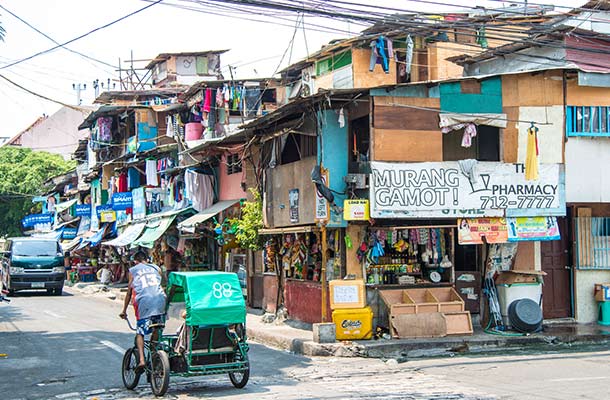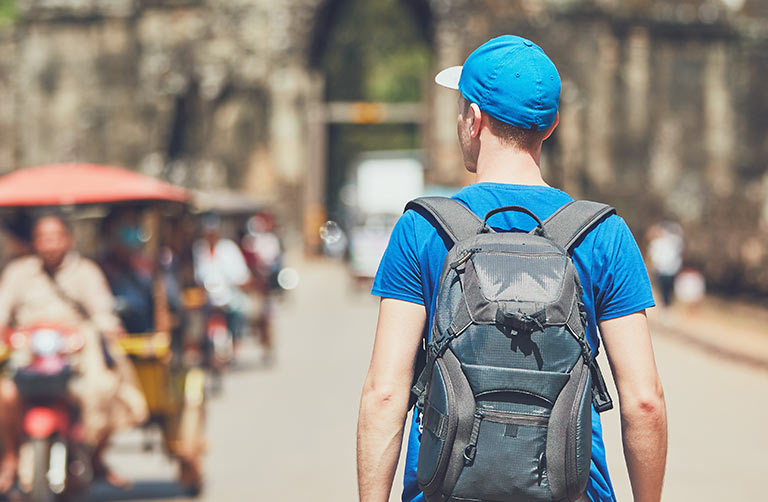Crime in the Philippines: What You Need To Look Out For
The beauty of the Philippines hides a darker side, where crime is an ongoing problem. Find out about guns, violence, terrorism and how to stay safe while traveling here.
 Photo © iStock/AzmanL
Photo © iStock/AzmanL
The beauty of the Philippines should not distract tourists from the ever-present danger of crime in a country with high levels of robbery, gang participation and terrorism. Tourists to the Philippines need to also be wary of drink spiking, ATM card skimming, illicit drugs, and pirates. Here’s your guide to crime in the Philippines.
- Philippines gun crime
- Illicit drugs in the Philippines
- Pickpockets in the Philippines
- ATM skimming in the Philippines
- Drink spiking in the Philippines
- Terrorism in the Philippines
- Pirates in the Philippines
- Kidnappings in the Philippines
Philippines gun crime
The Philippines has a major problem with firearms, with more than 600,000 unregistered guns in the country, according to research by the University of Sydney. Homicide and armed robbery are especially common in Manila, a giant city of more than 15 million people and home to dozens of dangerous street gangs.
Although most of the gun violence is concentrated in the city’s slums, rather than is tourist precincts, foreign travelers still need to take precautions to avoid being robbed. Most importantly, try not to showcase your valuables in public. That means not flashing large wads of cash, being subtle with your expensive smartphone, and leaving any ostentatious jewelry back at the hotel in your room safe.
Illicit drugs in the Philippines
Even being near drugs in the Philippines could get you killed. More than 10,000 people have been killed in the past decade as part of the Philippines Government’s infamous war on drugs, according to Amnesty International. That’s because, when he took office in 2016, Philippines’ President Rodrigo Duterte ordered the country’s police to execute any person they believed to be complicit in the drug trade.
While this State-sponsored killing spree has slowed considerably in recent years, it is still incredibly dangerous to have any association with illicit drugs in the Philippines, no matter how minor. Even if you avoid a violent fate, possession of any amount of drugs will see you imprisoned for between six months and four years.
Pickpockets in the Philippines
Widespread poverty in the Philippines leads to a high rate of crimes of desperation, such as petty theft. Foreign travelers are typically seen as being wealthy, and so are more likely to be targeted by pickpockets, particularly on public transport, in crowded areas like markets, or at popular tourist attractions.
These nimble-fingered criminals can snatch your belongings and disappear before you even recognize what’s occurred. So, keep your valuables inside zipped pockets in your clothing, or in a fanny pack concealed under your top.
ATM card skimming in the Philippines
The Philippines has a huge problem with card skimming. This involves fraudsters attaching small electronic devices to ATM machines that record your data, which is then transferred to another card and used to withdraw money from your account.
I’ve been very wary of card skimming ever since I returned from a holiday to Thailand to find $1,000 missing from my account. Since then, I’ve followed the advice of authorities and, when traveling, I only use ATMs attached to a bank, as they have much higher levels of security and CCTV surveillance, which makes them unattractive targets for card skimmers.
These criminals are far more likely to install a device on an ATM they can easily access without being interrupted by security, like the many ATMs attached to 24-hour convenience stores in the Philippines.
Drink spiking in the Philippines
In the Philippines, drink spiking is particularly prevalent in busy bars and nightclubs popular with visitors. Criminals commonly use the restricted drug Ativan (also known as Lorazepam), a sedative that can gradually cause someone who ingests it to lose consciousness. Ativan is largely flavorless and odorless, so it’s very difficult to know when your drink’s been spiked.
Your only protection is from preventative measures. Firstly, never accept a drink given to you by anyone but a bartender. Secondly, never leave your drink unattended, even for a few moments. Always keep it in your hand. Thirdly, if you begin to feel unexpectedly dizzy while in a bar or nightclub, immediately find your travel partner, or approach staff and tell them you may have had your drink spiked.
Terrorism in the Philippines
For decades now the southern Philippines, particularly Mindanao, has been plagued by violent Islamic terrorists, most prominently the Abu Sayyaf Group. That problem is linked to more than four centuries of resistance by the Moro people – a broad Muslim community in Mindanao – against outside influences. This has been exacerbated by the recent input of the Islamic State, to whom some of Mindanao’s terrorist groups are now loyal.
In 2017, pro-Islamic-state extremists laid siege to Marawi City in Mindanao for five months, resulting in hundreds of deaths as they fought against the Philippines military. More recently, terror groups have carried out bombings and suicide attacks in public places in Mindanao. Tourists to the southern Philippines should be particularly careful of visiting crowded places that are attractive targets for terrorist attacks, such as shopping centers, nightlife precincts and busy markets.
Pirates in the Philippines
Geographically, the Philippines is tailor-made for pirates. As an archipelago of more than 7,000 islands, most of which are uninhabited, there’s enormous boating activity for pirates to target, as well as many secluded places for these criminals to hide.
Most of the country’s piracy happens in its south, in the Sulu and Celebes seas. While these areas are patrolled by the Philippines Navy, the vast swathes of the ocean here allow ample space for pirates to ply their trade by hijacking anything from fishing trawlers to cargo ships, and pleasure boats.
There are dozens of such incidents a year in the southern Philippines, many of them linked to the Abu Sayyaf Group. Tourists should be very wary of taking boat trips on the Sulu and Celebes seas, the former of which is home to the Philippines' most popular diving spot, Tubbataha Reef, an isolated marine park.
Kidnappings in the Philippines
Kidnappings have long been common in the southern Philippines, connected to its piracy and terrorism problems. Abu Sayyaf Group is infamous for using kidnappings as a means of income, targeting both wealthy Filipinos and tourists.
They carry out these kidnappings in a wide variety of locations, variously grabbing their victims at roadblocks, on the open seas or even from inside hotels and resorts. The latter occurred in 2019 when a British man and his Filipino wife were snatched from a beach resort in Mindanao, dragged onto a boat, and held captive by Abu Sayyaf Group terrorists for more than a month before being rescued.
Related articles
Simple and flexible travel insurance
You can buy at home or while traveling, and claim online from anywhere in the world. With 150+ adventure activities covered and 24/7 emergency assistance.
Get a quote

2 Comments
Hi Guys im visiting Mindanao and Gensan next week with my filo girlfriend, it sounds a scary place for Australians and foreigners, but my girlfriend whose family have lived there for many generations, says its safe, even for a white man with a filo girlfriend quite a bit younger than myself.
I can only trust her on this?? we planned to stay in a hotel and then the families home.
Or should i stay in Manila and get her to fly to Manila?
I'd stay in Manila and get her to fly there. You would be too conspicuous as a white guy in Mindanao.